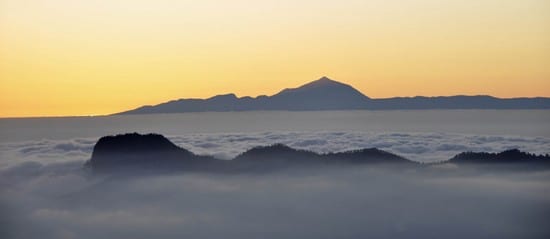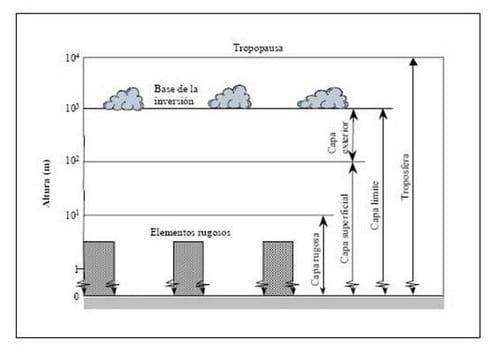A first level is usually recognized in the troposphere, defined by the influence of the geographical substrate, which is known as planetary boundary layer. It is dominated by the turbulent air mixture, generated by permanent friction with the rough surface of the ground and by the convective rise of air bubbles when heated.
This layer is conventionally assigned a height from 600 to 800 m, but can range from a few dozen meters to one or two km, depending on factors as varied as topography, surface roughness, nature of the vegetation cover, wind intensity, degree of heating or cooling of the soil, heat advection and humidity, etc. During the day, the heat input and the consequent vertical mixing of the air increase the thickness of the boundary layer, which reaches its maximum height in the early afternoon; on the contrary, during the night the cooling of the soil prevents turbulence and its thickness is reduced.
Sometimes, in addition, the vertical structure of the boundary layer allows differentiating several levels:
1) a molecular laminar layer, in contact with the ground, barely a few millimeters thick, dominated by the effects of surface viscosity;
2) then a turbulent layer several tens of meters high characterized by the intense turbulence of the air; and
3) the upper level, where the Coriolis force on the wind, called ekman cape.
Already above the free troposphere is located, with cleaner and less dense air, where the temperature drops at an average rate of 6 ºC / km.

